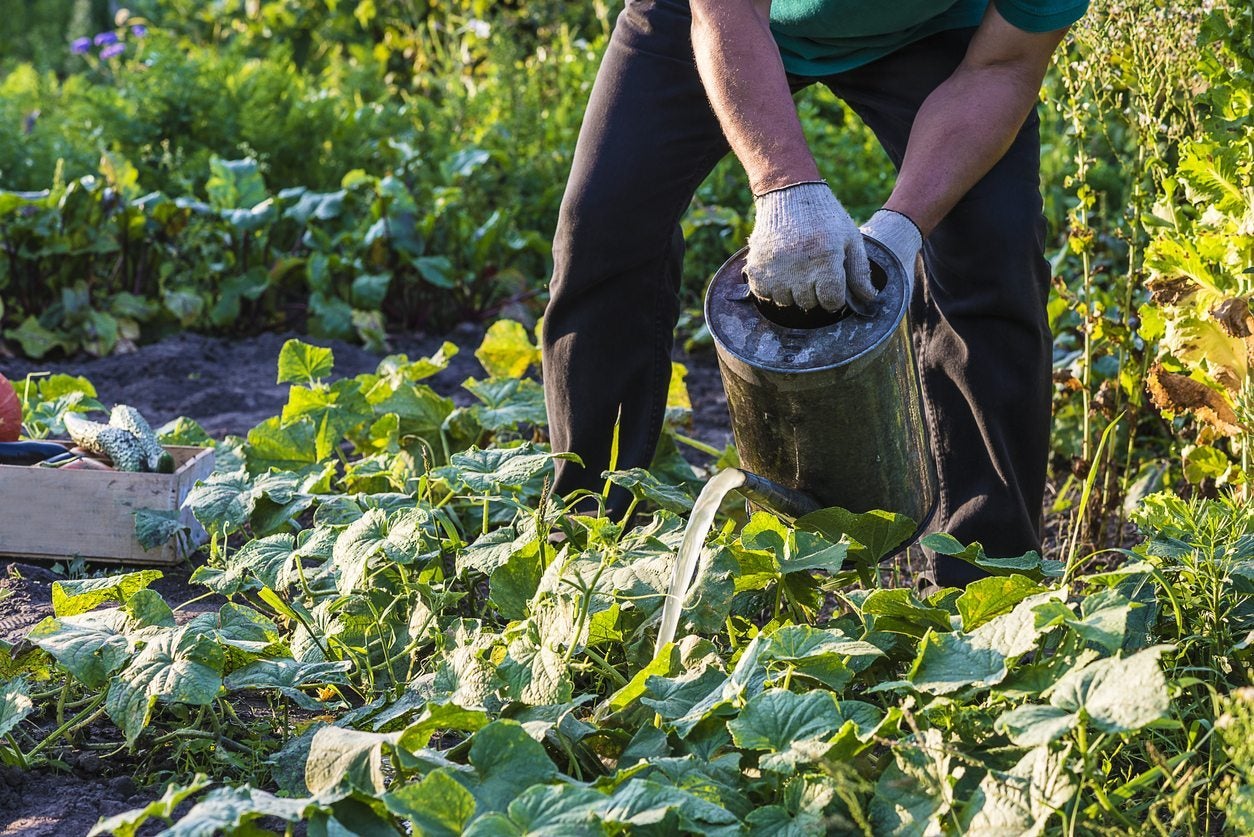Tips For Using Compost Tea – How Do I Apply Compost Tea To My Plants


Most of us have heard of the benefits of compost, but do you know how to use compost tea? Using compost tea as a foliar spray, drench, or simply added to houseplant water provides quick, easy-to-uptake nutrients in a gentle, organic manner. It is one of the easier fertilizing methods and can even be made from household items like kitchen scraps. Further reading will introduce you to compost tea applications and other tips.
Benefits of Compost Tea
Whether you have local yard waste recycling or are a DIY composter, compost is useful as a soil amendment. Making compost tea dilutes the nutrients, making them easier for plants to use quickly. It also reduces the possibility of harm from synthetic preparations and ensures an organic feeding. The tea may help ward off some diseases and pest problems as well. Knowing when to apply compost tea and how to mix it will ensure plants get the boost they need. Using compost tea can deliver powerful health benefits to most plants. It introduces good microbes that can overtake the bad microbes which cause disease. Regular use will increase these benevolent microbes, boosting overall soil health. It also helps soil retain water, reduces fertilizer usage and attendant salt accumulation, and improves soil pH to levels that encourage nutrient and moisture uptake by plants. Teas made from compost that is primarily plant based can be used nearly daily if necessary. Those with a high nitrogen content, such as composted manure, can still burn plants and should be applied no more than once per month in a heavily diluted state.
When to Apply Compost Tea
The optimum time of day to apply compost tea is in the morning, when plant stoma are open to receive it and the sun will dry leaves and prevent fungal diseases from excess moisture. Apply when soil is moist if using the product as a drench. For most ornamental plants, spray in late winter to early spring and again when leaf buds break. For annual beds, use tea prior to planting to boost beneficial microbes. If you experience fungal or insect issues, apply the tea immediately and at each regular watering period. Even houseplants benefit from compost tea application. Use well diluted by at least half at normal irrigation periods.
How Do I Apply Compost Tea?
Making the correct mixture that is a balance of the compost and water is an important first step. Compost tea can "brew" in either an aerobic or anaerobic state. The non-aerated tea is mixed in a container with water and allowed to ferment for five to eight days. Aerated teas are ready in 24 to 48 hours. You can make these by suspending the compost in a burlap sack over a container and showering it with water, letting the leached solution drip into the container. Spray the mixture onto plant leaves or drench the soil around the root zone. Teas may be used full strength or diluted at a ratio of 10:1. Apply 5 to 10 gallons per ¼ acre for larger situations (approx. 19 to 38 liters per .10 hectare) when using the fertilizer for root drenches. Large area foliar sprays should use 5 gallons per 2 acres (about 19 liters per .81 hectare).
Gardening tips, videos, info and more delivered right to your inbox!
Sign up for the Gardening Know How newsletter today and receive a free copy of our e-book "How to Grow Delicious Tomatoes".

Bonnie Grant is a professional landscaper with a Certification in Urban Gardening. She has been gardening and writing for 15 years. A former professional chef, she has a passion for edible landscaping.
-
 Looking For Plants To Give You The Soft And Fuzzies? Try These 5 Fuzzy Leaf Plant Options
Looking For Plants To Give You The Soft And Fuzzies? Try These 5 Fuzzy Leaf Plant OptionsLovers of texture, drama, silver foliage and tactile plants will adore these special sensory garden additions. These fuzzy leaf plant options will leave you all aglow
By Susan Albert
-
 Get Ready For A Summer Of Hummers! Grow These Full Sun Hummingbird Plants and Flowers
Get Ready For A Summer Of Hummers! Grow These Full Sun Hummingbird Plants and FlowersIf you’re lucky enough to enjoy a sunny backyard, make sure you are maxing out on your pollinator opportunities and grow these full sun hummingbird plants and flowers
By Tonya Barnett